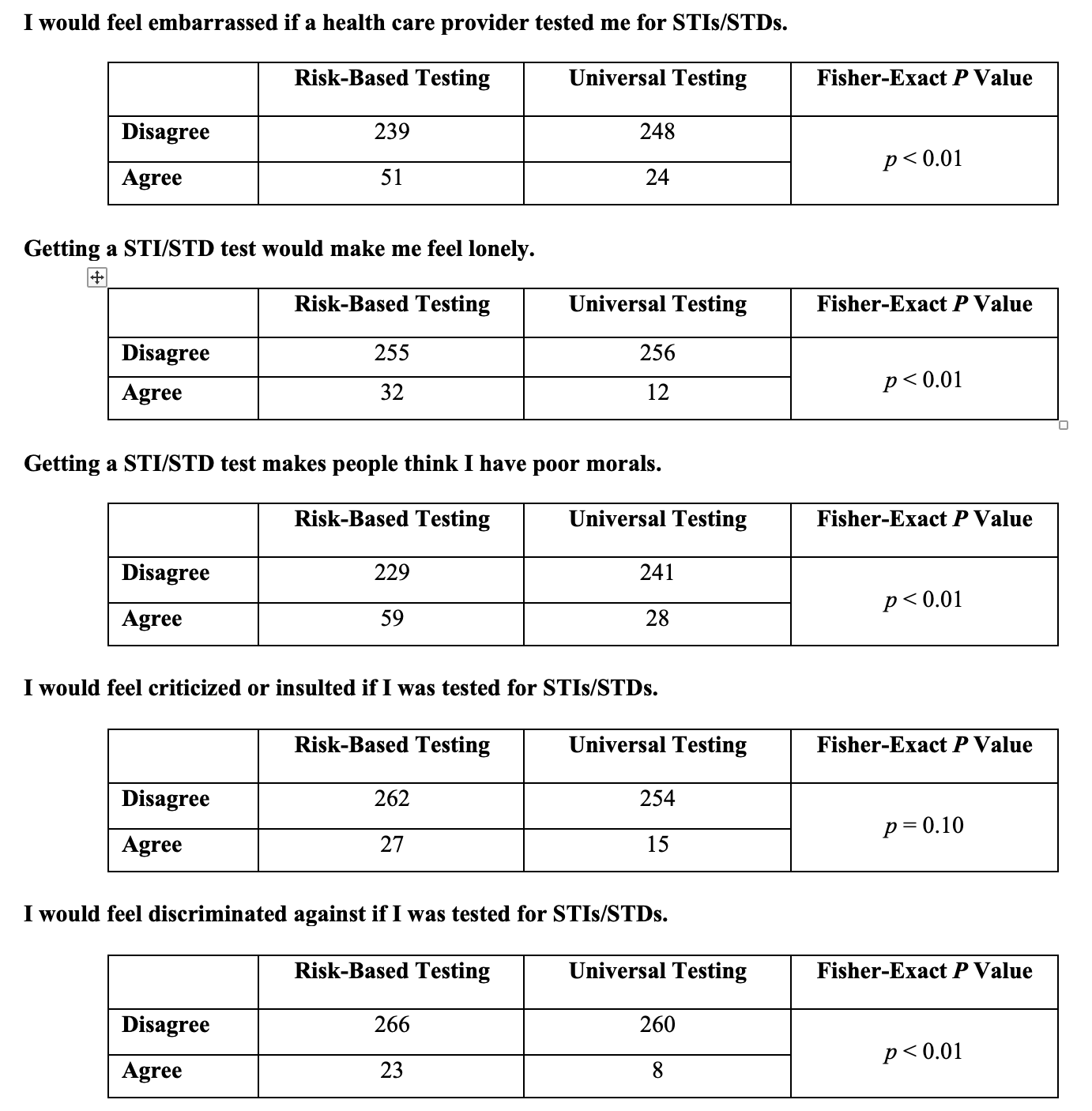Infectious Diseases
Category: Abstract Submission
Infectious Diseases: Potpourri
542 - Adolescents’ and young adults’ preferences for and perceived barriers to gonorrhea and chlamydia testing
Sunday, April 24, 2022
3:30 PM - 6:00 PM US MT
Poster Number: 542
Publication Number: 542.328
Publication Number: 542.328
Sarah B. Reingold, University of Colorado Internal Medicine and Pediatrics Program, Denver, CO, United States; Margaret Tomcho, University of Colorado School of Medicine, Denver, CO, United States; Tara Thomas-Gale, Denver Health, Denver, CO, United States; Christine Haynes, University of Colorado School of Medicine, Denver, CO, United States; Sonja c. OLeary, University of Colorado School of Medicine, denver, CO, United States; Sarah Warsh, Denver Health, Denver, CO, United States; Debbie Rinehart, Denver Health, Denver, CO, United States; Holly M. Frost, Denver Health and Hospital Authority, Denver, CO, United States

Sarah B. Reingold, MD
Resident
University of Colorado Internal Medicine and Pediatrics Program
Denver, Colorado, United States
Presenting Author(s)
Background: Universal opt-out gonorrhea (GC) and chlamydia (CT) testing among adolescents and young adults does not rely on patient disclosure or clinicians obtaining a sexual history and can lead to earlier identification and treatment. However, no prior studies have investigated patient preferences for universal screening compared to risk-based screening or which screening strategy minimizes sexually transmitted infection (STI)-related barriers, including stigma.
Objective: To assess adolescents’ and young adults’ preferences for GC and CT testing strategies and associated barriers to GC and CT screening, including STI-related stigma.
Design/Methods: A single-center cross-sectional quantitative study of adolescents and young adults (ages 14 to 24 years) from July-October 2021 at Denver Health, Denver, CO was conducted. A survey was developed based on a literature review and a previously published STI-related stigma questionnaire that was refined by subject matter experts and youth health advisors. A link to the survey was disseminated via advertisements in clinics and text messages. The survey explored GC and CT testing preferences, STI-testing related stigma and demographic data. A total of 8,775 adolescents and young adults were texted a link to the survey. Final analysis included survey data from 406 participants. Descriptive analysis and Fischer’s exact test were used to determine factors associated with GC and CT testing preferences.
Results: The majority of respondents identified as female (73%, n=189), White (60%, n=151), Hispanic (55%, n=141), some college education or higher (64%, n=166), straight/heterosexual (59%, n=148) and sexually active in the past 12 months (93%, n=213). Almost half reported never using a condom and/or dental dam (47%, n=106). 92% of respondents preferred universal GC and CT testing (n=318) compared to risk-based testing (7%, n=24). Risk-based GC and CT testing was associated with more STI-related stigma compared to universal testing (see Table 1), including feelings of embarrassment (p < 0.01), loneliness (p < 0.01), discrimination (p < 0.05) and having poor morals (p < 0.01), although not with feeling criticized or insulted (p=0.10).Conclusion(s): Survey respondents preferred universal opt-out GC and CT testing compared to risk-based testing. Universal testing was associated with less stigma compared to risk-based testing. A universal GC and CT testing approach could minimize stigma and improve testing rates among adolescents and young adults.
Table: STI-Related Stigma
Objective: To assess adolescents’ and young adults’ preferences for GC and CT testing strategies and associated barriers to GC and CT screening, including STI-related stigma.
Design/Methods: A single-center cross-sectional quantitative study of adolescents and young adults (ages 14 to 24 years) from July-October 2021 at Denver Health, Denver, CO was conducted. A survey was developed based on a literature review and a previously published STI-related stigma questionnaire that was refined by subject matter experts and youth health advisors. A link to the survey was disseminated via advertisements in clinics and text messages. The survey explored GC and CT testing preferences, STI-testing related stigma and demographic data. A total of 8,775 adolescents and young adults were texted a link to the survey. Final analysis included survey data from 406 participants. Descriptive analysis and Fischer’s exact test were used to determine factors associated with GC and CT testing preferences.
Results: The majority of respondents identified as female (73%, n=189), White (60%, n=151), Hispanic (55%, n=141), some college education or higher (64%, n=166), straight/heterosexual (59%, n=148) and sexually active in the past 12 months (93%, n=213). Almost half reported never using a condom and/or dental dam (47%, n=106). 92% of respondents preferred universal GC and CT testing (n=318) compared to risk-based testing (7%, n=24). Risk-based GC and CT testing was associated with more STI-related stigma compared to universal testing (see Table 1), including feelings of embarrassment (p < 0.01), loneliness (p < 0.01), discrimination (p < 0.05) and having poor morals (p < 0.01), although not with feeling criticized or insulted (p=0.10).Conclusion(s): Survey respondents preferred universal opt-out GC and CT testing compared to risk-based testing. Universal testing was associated with less stigma compared to risk-based testing. A universal GC and CT testing approach could minimize stigma and improve testing rates among adolescents and young adults.
Table: STI-Related Stigma

